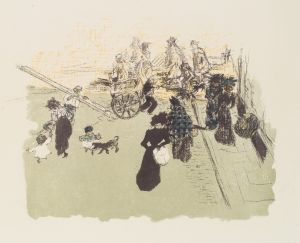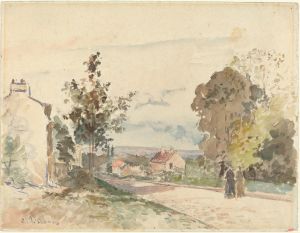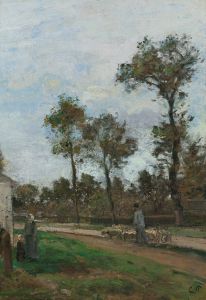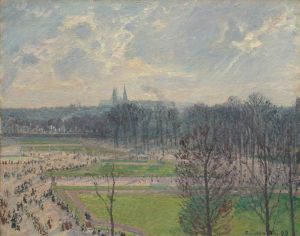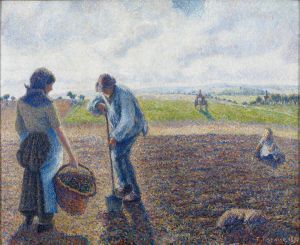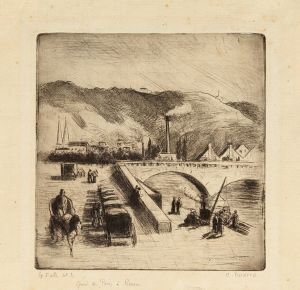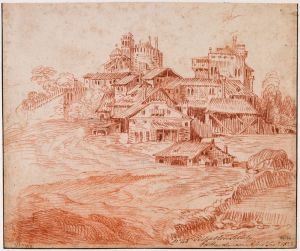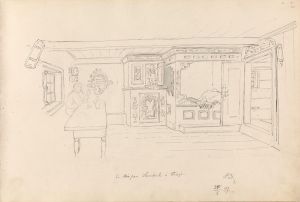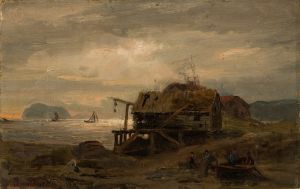
La Mère Gaspard, Pontoise
A hand-painted replica of Camille Pissarro’s masterpiece La Mère Gaspard, Pontoise, meticulously crafted by professional artists to capture the true essence of the original. Each piece is created with museum-quality canvas and rare mineral pigments, carefully painted by experienced artists with delicate brushstrokes and rich, layered colors to perfectly recreate the texture of the original artwork. Unlike machine-printed reproductions, this hand-painted version brings the painting to life, infused with the artist’s emotions and skill in every stroke. Whether for personal collection or home decoration, it instantly elevates the artistic atmosphere of any space.
Camille Pissarro, a Danish-French Impressionist and Neo-Impressionist painter, is known for his significant contributions to the Impressionist movement. One of his works, "La Mère Gaspard, Pontoise," reflects his dedication to capturing rural life and the natural environment with a keen eye for detail and a profound understanding of light and color.
Pissarro was born on July 10, 1830, on the island of St. Thomas in the Danish West Indies. He moved to Paris in 1855, where he became a pivotal figure in the Impressionist movement, which sought to capture the effects of light and atmosphere in everyday scenes. Pissarro's work often depicted rural and urban French life, and he was known for his ability to portray the nuances of the natural world.
"La Mère Gaspard, Pontoise" is one of Pissarro's paintings that exemplifies his interest in rural themes and his connection to the village of Pontoise, where he lived for several years. Pontoise, located northwest of Paris, provided Pissarro with a wealth of inspiration due to its picturesque landscapes and the simplicity of rural life. This setting allowed him to explore the interplay of light and shadow, a hallmark of his work.
The painting features a woman, presumably the titular "Mère Gaspard," engaged in a daily activity, set against the backdrop of the Pontoise countryside. Pissarro's use of color and brushwork in this piece is characteristic of his style during this period. He employed a palette that captured the subtle variations in natural light, using short, broken brushstrokes to create a sense of movement and immediacy.
Pissarro's approach to painting was heavily influenced by his interactions with other Impressionist artists, including Claude Monet, Edgar Degas, and Pierre-Auguste Renoir. He was a mentor to several younger artists, including Paul Cézanne and Paul Gauguin, and his work laid the groundwork for the development of Neo-Impressionism.
The significance of "La Mère Gaspard, Pontoise" lies in its representation of Pissarro's commitment to depicting the lives of ordinary people with dignity and respect. His focus on rural subjects was not merely an aesthetic choice but also a reflection of his political beliefs. Pissarro was an anarchist, and his art often conveyed a sense of egalitarianism and a deep appreciation for the working class.
Throughout his career, Pissarro participated in all eight of the Impressionist exhibitions, and his work was instrumental in defining the movement. Despite facing financial difficulties and critical challenges, he remained dedicated to his artistic vision, continually experimenting with techniques and styles.
"La Mère Gaspard, Pontoise" is a testament to Pissarro's enduring legacy as a painter who captured the beauty and complexity of everyday life. His ability to convey the essence of a moment through his innovative use of color and light has left a lasting impact on the art world. Today, Pissarro's works are celebrated for their contribution to the Impressionist movement and their influence on subsequent generations of artists.





